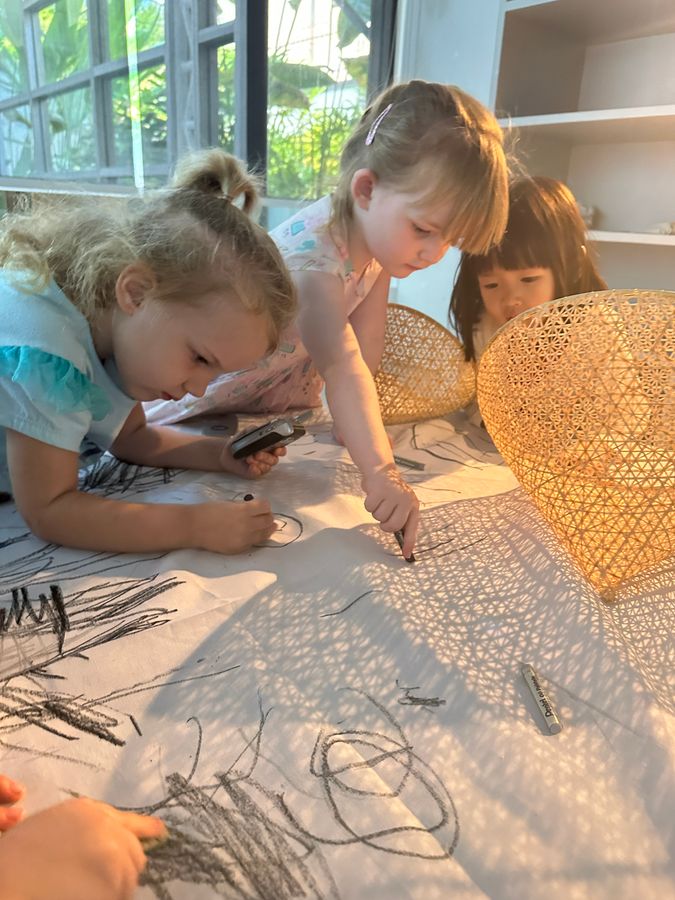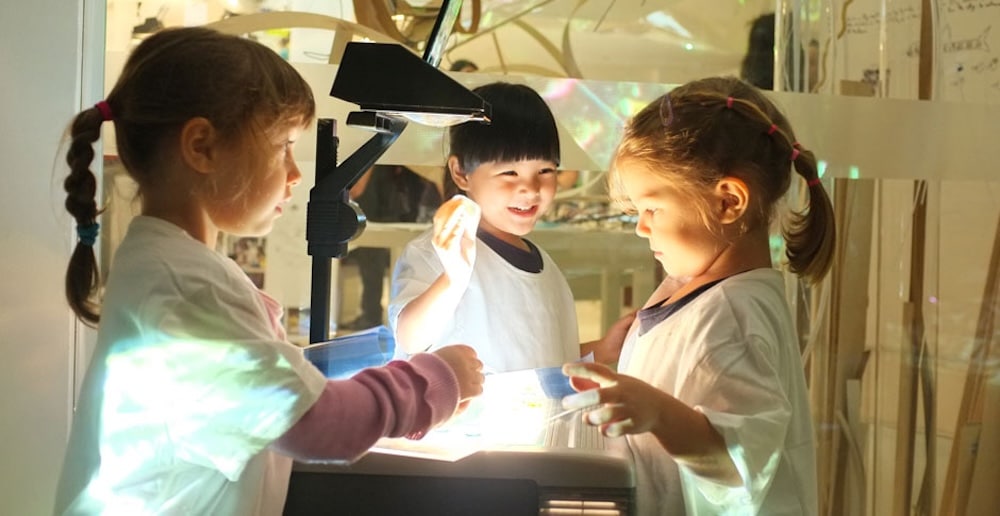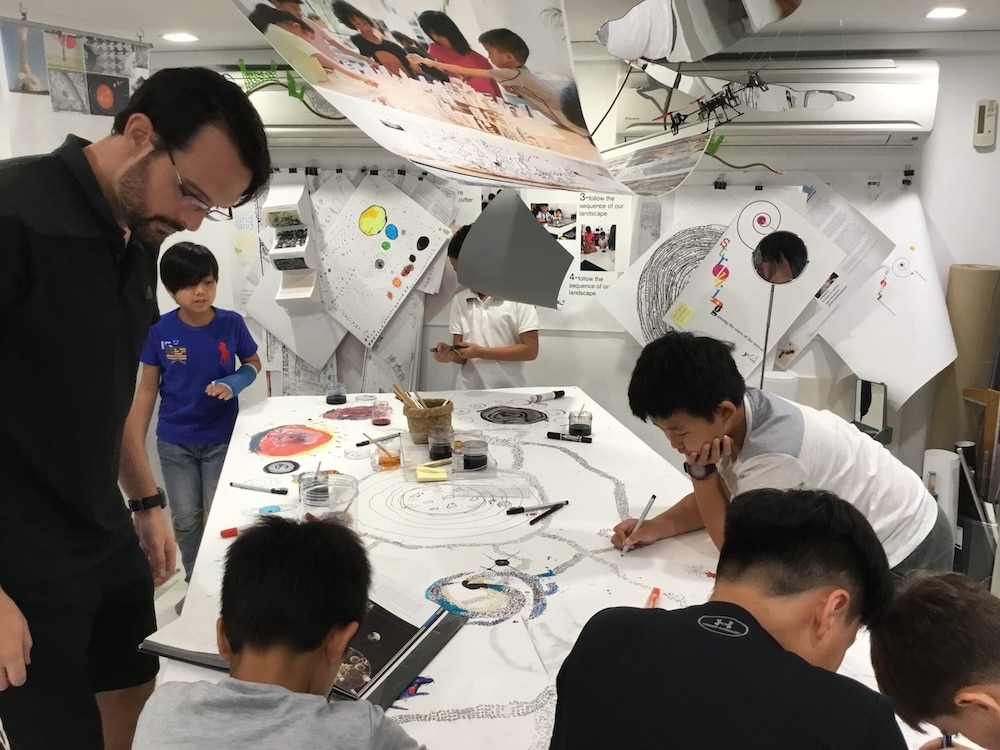Mark making is a critical process in early learning and development, providing the foundations for handwriting, literacy, and early mathematical concepts.
Children make different kinds of marks – patterns, lines, shapes, dots, and textures – whether on paper, floor, or outside, using a range of materials and tools such as paintbrushes, crayons, foil, sponges, hands, leaves, feathers, and sticks. Mark-making begins as a physical and sensory experience, and it continues to promote physical development as children practice their fine motor skills, shoulder control and core strength, as well as their hand-eye coordination and focus.
But more than this, it is a process whereby children discover that the marks they make carry meaning. Marks are a first step in representing numerals and shapes, ‘words’ or symbols. Children use marks to communicate their feelings, thoughts and ideas, to explore their understanding of the world, to create, to tell a story, and to develop their sense of identity.
Here, our children observe shadows cast by objects and use black and grey crayons to trace the shapes formed by these shadows. In this learning encounter, the children are exploring the effects of light and
communicate their thoughts through graphic representation.
The children can develop their vocabulary and understanding as they describe their drawings. At the Purple Elephant centres, our educators provide frequent opportunities for mark-making through the curation of provocations and environments and work together with the children to render their thinking ‘visible’.
#ReggioEmiliaapproach #earlyyearseducation



